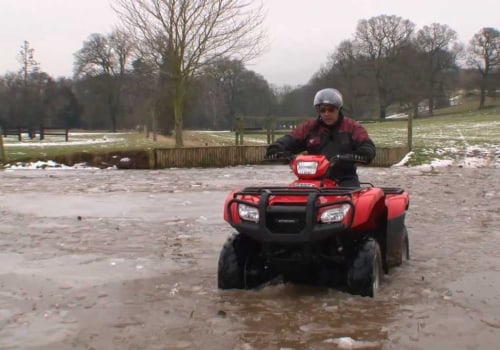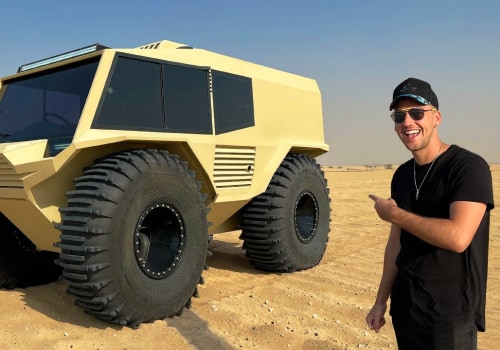All-terrain vehicles, or ATVs, are versatile off-road vehicles that come in a variety of sizes and styles. From 50 cc youth ATVs to 800 cc utility ATVs and even side-to-side vehicles and UTVs over 1,000 cc, there is an ATV for every purpose. These off-road vehicles are used in agricultural applications, for recreational off-road driving, in military operations, and even for racing. In this article, we'll explore the different types of ATVs and their uses.
ATVs come in a range of sizes, from 50 cc youth ATVs to 700 cc sports ATVs and 800 cc utility ATVs. Big Boss Sportsman 300 Sportsman 400 Sportsman 400 Sportsman 800 Sportsman 850 XP Yamaha Banshee Yamaha Blaster Yamaha Warrior 350 Wolverine ATVs generally weigh in the (dry weight) range of 220 lbs to 1170 lbs (100 kg to 531 kg). This is the weight of the machine, not including liquids, cargo or passengers. In Australia, these four-wheeled vehicles are known as four-wheeled vehicles; in Africa, they are called quads or quadricycles; and in the U. S., they are referred to as ATVs or LUVs (light utility vehicles).
The four wheels provide greater stability and give the ATV greater versatility for off-road applications than a motorcycle. ATVs are used in agricultural applications to easily move around the farm, where roads are poor or non-existent. They can even pull small trailers to move feed, livestock and equipment around the farm. Off-road vehicles have also gained fans as recreational off-road vehicles for traveling challenging trails and driving through rural areas for fun. All-terrain vehicle racing has become popular and lucrative in the motorsport scene, with races taking place on tracks, dirt arenas, and off-road trails.
Off-road vehicles used for racing have improved engines, modified chassis, and suspensions to give vehicles better handling and speed. In some countries, the ATV is considered a legal vehicle for driving on the road; however, in most parts of the United States, Canada and Australia, the vehicle is not legal on the road and is only allowed for off-road use. In the military context, all-terrain vehicles have also been used as fast vehicles to position attack teams in rough terrain that larger vehicles cannot cross. Task utility vehicles or UTVs are similar to all-terrain vehicles but are slightly larger and have a different seating arrangement. The seats in a UTV are next to each other on a bench rather than sitting straddling the machine. This seating arrangement has led to these vehicles being referred to as SSV or side-to-side vehicles.
UTVs can carry between 2 and 6 people depending on the vehicle configuration. Two-seater UTVs with a load compartment in the rear are often used in agricultural and hunting contexts as off-road vehicles to access hard-to-reach parts of farms or hunting grounds. There are safety issues similar to those of off-road vehicles with UTVs which has led many manufacturers to include rollover protection for vehicle occupants. Sand rails are recreational off-road vehicles tailor made for sandy conditions. These vehicles are not legal on the street and are strictly for off-road use. Sand rails are named after the tubular steel rails used to build the vehicle structure and are designed for off-road driving in sandy conditions.
Sand railings are generally custom made with a low center of gravity to allow steep sandbanks to be raised and lowered without the risk of tipping over. Enduro motorcycles are off-road bikes specifically developed to participate in off-road rallies or long distance enduro races. These enduro bikes are similar to motocross bikes but have features specifically adapted to long distances for which they are intended. Enduro bikes typically have engines that range in size from 125 cc to 650 cc. Cyclists who tend to ride in muddy conditions tend to prefer enduro bikes with smaller lighter engines while cyclists who ride in sandy conditions prefer the weight and power of larger engines. Many enduro bikes are configured to be legal on the road as they often have headlights and other electronic devices that help drive cross country in the dark. Motocross bikes are designed for a specific style of off road racing and recreational driving.
Motocross races are normally held on off road tracks specifically designed for the race. Motocross bikes are usually lighter than enduro bikes and have suspensions designed to withstand landing tensions after big jumps and bumpy tracks. Motocross bikes are not usually configured to be legal on the street since they are not used to race in the dark. Motocross bikes usually have very few electrical or electronic components on them as their weight would slow down motorcycles in short fast races. Trail bikes are technical mountain biking bikes for off road trails rather than for fast pace short motocross races on tracks. Riding on trails is like riding a motorcycle and bicycles designed for this purpose have some features that make them different from motocross bikes such as larger fuel tanks than motocross bikes providing longer distances smoother suspension for greater comfort during longer trips smaller motors than enduro bikes so they can be maneuverable on narrow trails with sharp turns less sensitive accelerator than motocross bikes requiring fewer changes between gears.
Because there is a risk that a trail ride will last until late at night most trail bikes come equipped with headlights and other electronic devices such as electric starters making them legal on roads if they don't already meet this standard. Serious injuries caused by accidents when driving off road vehicles have put safety of these vehicles in spotlight recently. The most common accidents involve somersaults or rollovers where ATV lands on top of driver. Many of these injuries can be minimized by using right safety equipment and driving techniques.







